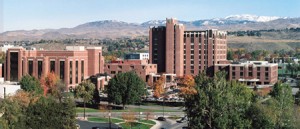Where the Jobs Are (and Aren’t) in Idaho
The big employers in Idaho just keep getting bigger.
Most of the top companies and government agencies five years ago have managed to either retain or expand their workforce, according to a new StateImpact analysis of data provided by the Idaho Department of Labor.
St. Luke’s Health Systems saw the largest growth, with its workforce of between 4,000 and 5,000 employees in 2005 increasing by about 4,000 by the end of fiscal year 2011.
That’s not to say there aren’t plenty of businesses and government agencies that cut jobs during that same time period. The biggest loser was Boise-based Micron Technology, which reduced its workforce by between 3,500 and 5,000. Albertsons/Supervalu, Hewlett-Packard and Potlatch Forest Products Corp also reduced their workforces.
[spreadsheet key=”0AoRcHDQqbLhbdEdFUndrSmxnXzJtUkdDUmhQWEVuemc” source=”Idaho Department of Labor” sheet=0 filter=0 paginate=0 sortable=1]
The Idaho Department of Health and Welfare, the fourteenth largest employer in the state, also saw it’s workforce dwindle in spite of a growing caseload. The Department administers food stamp, child welfare and Medicaid programs, among other social services and is currently making their case before the legislative budget committee to retain or increase their current staffing levels. We’ve made a sortable spreadsheet of Idaho’s top 30-plus employers–including the number of employees they have in Idaho–going back to 2005 here.
Idaho state employees don’t appear in one big chunk in the data, as each state agency is required to file their numbers separately. However, if taken as one entity, the state would finish well ahead of other employers in the state, with about 24,400 employees at the start of this calendar year, according the state controller’s office. That figure has decreased just slightly since 2005, and doesn’t include local, county or school district employees.
Employment data is reported to the state in ranges in order to reflect any changes that may have occurred over the year. It is calculated according to the federal fiscal calendar, which runs from September through October.

